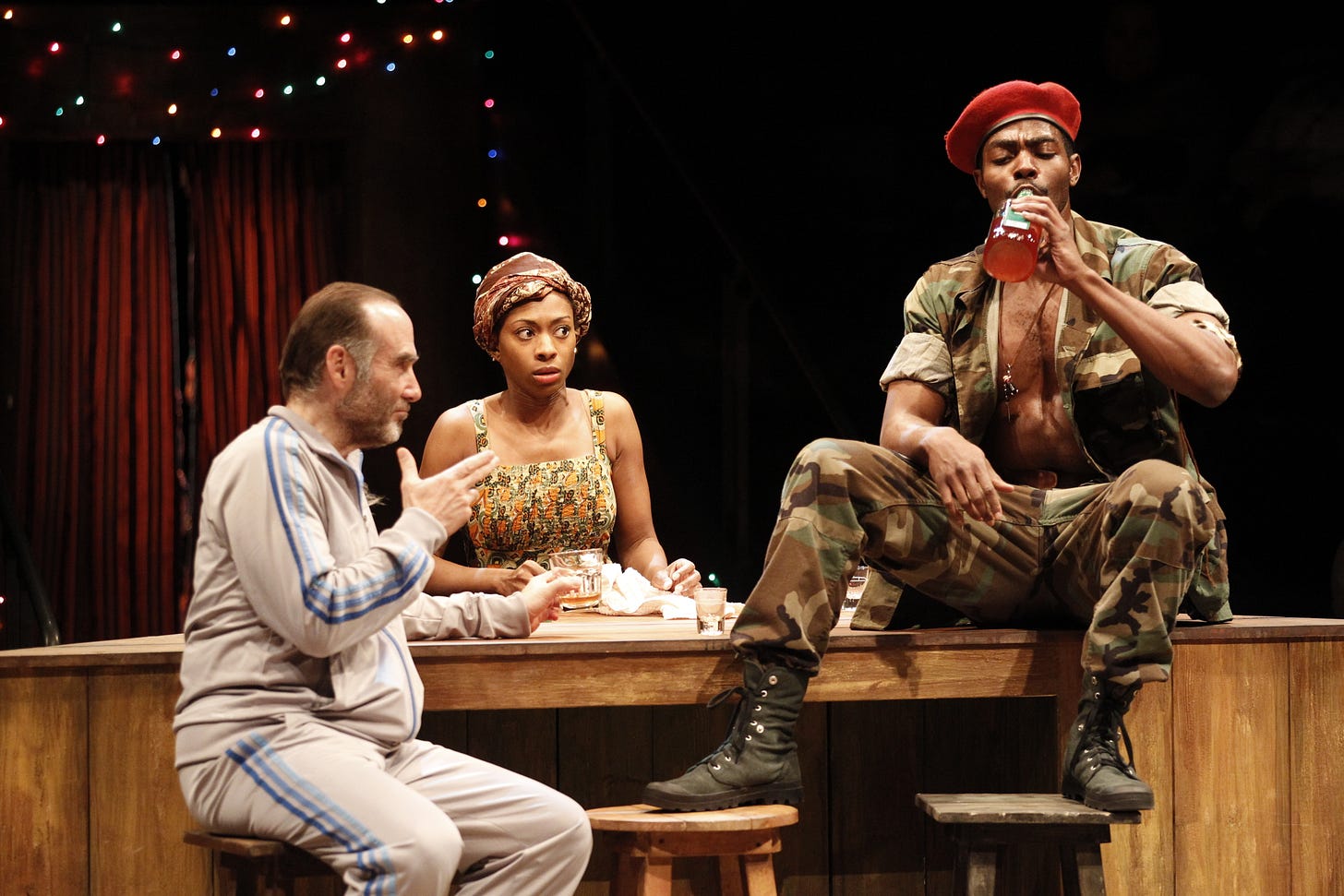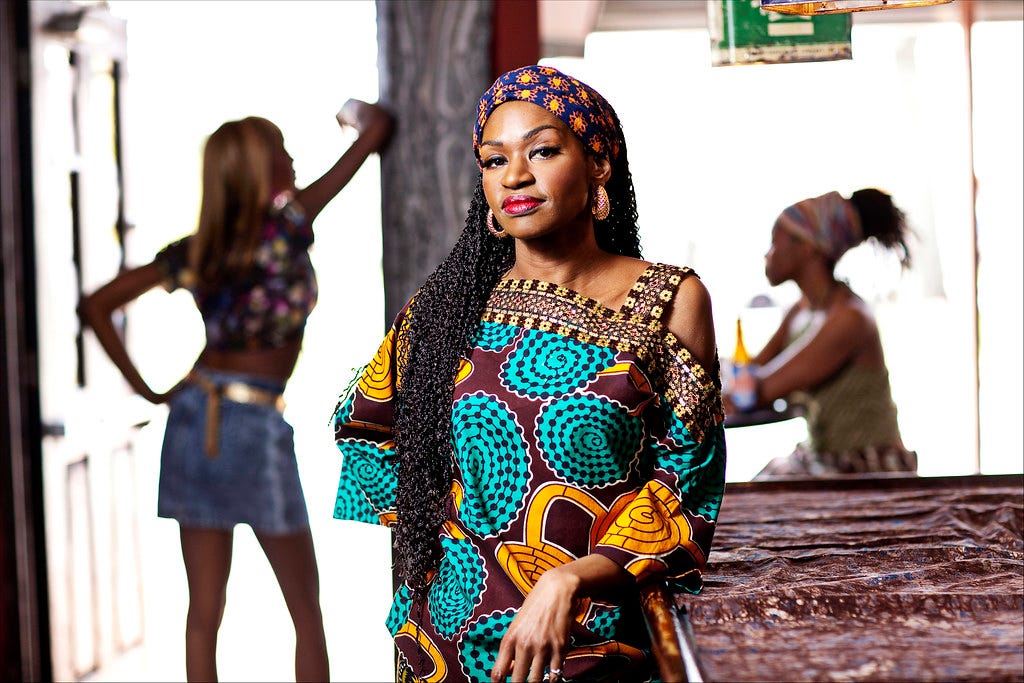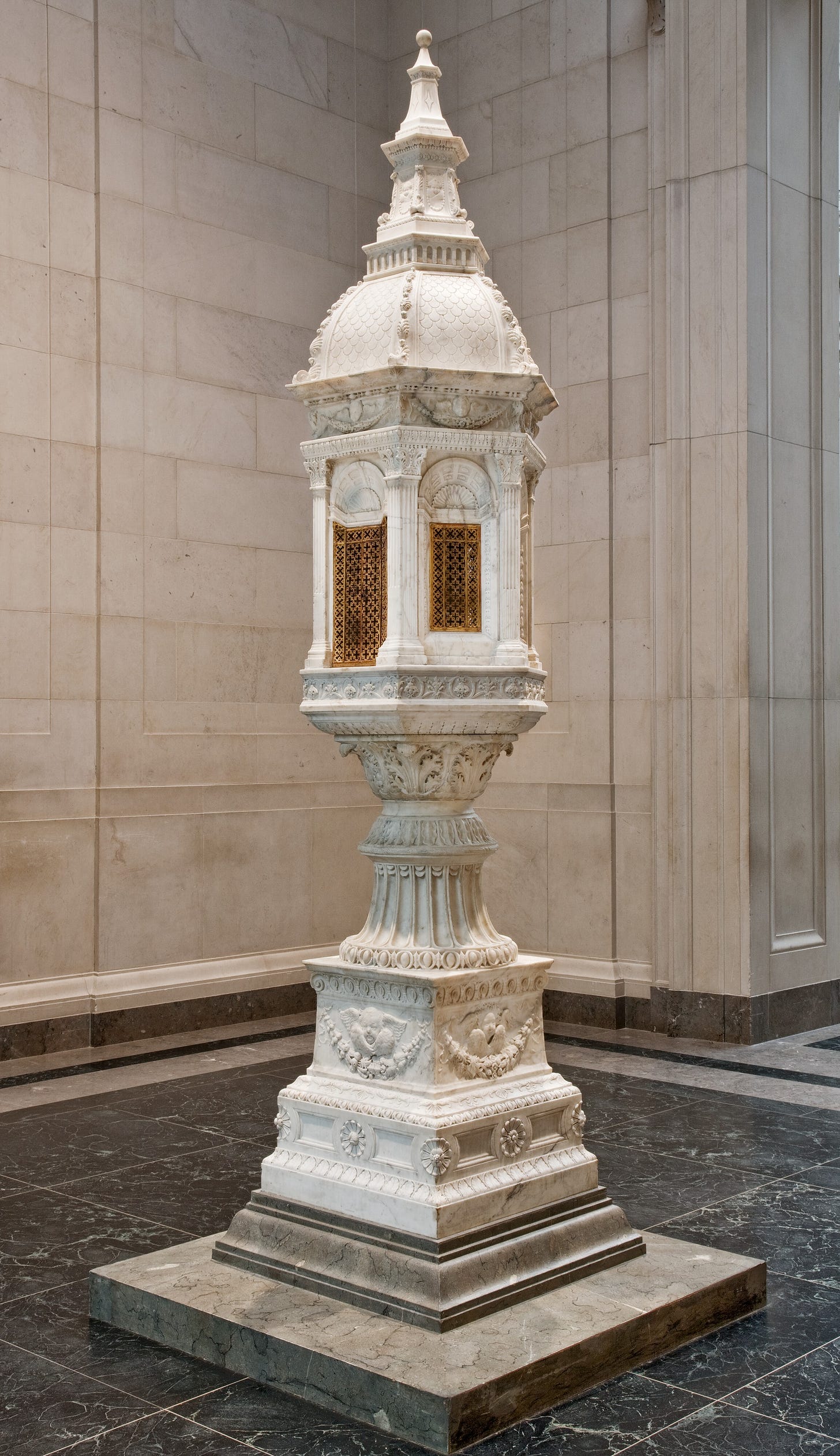Why Do We Ignore the Arts?
Art can transcend culture & time, even outlasting civilizations. Yet many, including those embroiled in our "Culture Wars", routinely dismiss its power & significance. What is lost by this omission?
“Go to the Museum!”
Over a decade ago, I was cast in a searing play called Ruined, by Pulitzer-winning titan Lynn Nottage, at Arena Stage, one of the most respected theatres in Washington D.C. (a city that rivals—and in some ways surpasses—New York as a “Theatre Town”).

Set in a bar and brothel in the Democratic Republic of Congo, Ruined centers around three women, chief among them matriarch Mama Nadi, who must weather the increasingly explosive political turmoil between government and rebel forces on the outside, in a region where the rape and torture of women is a commonly used tactic of war.
Despite the grim subject matter, the play pulsates with life, balancing its tension, danger, and creeping dread with music, humor, and a life-affirming love story at the play's center—the startling work premiered at New York's Manhattan Theatre Club in late January of 2009, and was such a sensation it was extended over and over again, running for nearly seven months before finally closing in early September.
To this day, it is a mystery as to why the play never transferred to Broadway.
Jenny Jules, hot off of her award-winning performance as Mama Nadi London's Almeida Theatre, again assailed the role in our Washington production, giving a bravura turn I will never forget; our director was the gifted Charles Randolph-Wright, who later went on to direct the long-running Broadway smash hit Motown; our beautiful costumes were designed by the talented E Sosa, who had recently shot to prominence on Project Runway; our African band was comprised partially of musicians who grew up in Congo, lending our work an extra layer of authenticity.
On paper, it appeared as if Arena Stage had already captured lightning in a bottle—and by the end of our first week, a rough run-through of the show indicated that that was very much the case.

For a young actor, freshly graduated with an MFA from one of the most elite conservatories in the world, by all accounts it should have been a dream job: housing paid for in a beautiful area of the city, getting paid a great salary at one of the top theatres in the country, working with an incredible team of artists.
As it happens, however, I was in the throes of an existential quarter-life crisis, riven with an incessant, unrelenting emptiness and despair.
What am I doing? I wondered, in what way is any of this significant? There are real problems in the world, and here I am doing PLAYS.
What the hell is the point of all of this?
I related my troubles to a mentor and former teacher, who patiently listened to my angst, before offering what seemed cold comfort at the time, in the guise of four words:
“Go to the museum.”
A HIGHER POWER
I am not one of those hoary intellectuals who can pontificate at length on the significance of a piece of art; I can tell you nothing about successful composition, the tradition out of which a work emerged, or the significance of any of its symbology.
The crude extent of my sophistication with regard to most art is that I know what I like and what I don't.
As I crept through the halls of Washington's National Gallery, I was immediately struck by the paintings—I am deeply attracted to oil painting, usually Realism and especially Impressionistic—marveling at the skill of the artists in conveying the sheen and fold of a satin garment, or the dappled light of dusk on rippling water, or each wrinkle and blemish on a patch of aged skin. Closer examination of the works evoked still more awe, as the sight of each brush stroke legitimized the piece as the work of flesh and blood human being, long dead, who was endowed with vision, discipline, skill, focus, and a keen eye for detail.
And yet, as taken as I was with these masterful relics of an era long gone, it was moseying through the sculptures that revealed the wisdom of my mentor's advice.
I was first dazzled by the Greek sculptures that evinced a culture that celebrated humanity (a stark contrast to today), capturing in particular the male form in all its sinewy perfection—every ripple of chiseled muscle transforming the marble into something greater than itself, a three-dimensional still-life, vibrating with beauty and virility.
Yet, as someone who had recently declared himself as staunchly Atheist just months before, it was the religious sculptures, featuring figures and events familiar even to a Godless heathen such as myself—Jesus, the Virgin Mary, and the tragedy of the Pieta—that stirred me, and began to transport me to a realm beyond what Hamlet chides as Horatio's “philosophy”.
How on earth did these artists, these craftsmen, make each fold of a garment look so natural, or distinguish the fatty, dimpled flesh of an infant from the soft smoothness of a young adult female? And how could they capture such emotion, such drama—how could they wring such deep pathos out of a slab of marble?
And yet, as remarkable and inspiring as all this was, the revelatory moment came, oddly enough, as I beheld Florentine sculptor Desiderio da Settignano's Ciborium for the Sacrament:
A 15th century work standing at greater than 10 feet tall, and weighing just shy of a ton, I lack the vocabulary to describe the craftsmanship that went into it.
Enraptured by what I saw, my mind thundered with still more questions: how did he do that? Is this, what is possible to produce as an artist?? How long must this have taken, each corner and crevice, arch, each feather on the wings flanking each cherubic face?
I'm unsure how long I stood there, gazing at Mr. Settignano's work. But as I came back to earth, I felt a flash of self-consciousness, despite being the only person in the room.
I had been crying.
And with that catharsis, the demons weighing on me were exorcised (at least, for the moment).
But I've since been vexed by a more troubling question—one that I feel has deeper and more unsettling implications, not only with regard to the overall quality of American art (and, frankly, its artists), but the quality and strength of American culture as a whole:
Do we even have a society capable of the imagination, creative vision, disciplined effort, taste, and skill, as was so brilliantly and movingly exhibited by the artists of centuries past?
CULTURE WARS
America's so-called “Culture War” can very crudely be drawn between two factions.
One is an entrenched status quo, implanted and reinforced by various institutions, from popular culture and entertainment to our legacy media apparatus, policed by massive tech giants such as Twitter and Google—that demands fealty to one vision of the world, lest you be considered “racist” (the new term for “sinner”) and “canceled” (the new term for “excommunicated”).
The other is an unruly, rambunctious crowd, fiercely independent-minded, combating what they view as Neo-Puritanism with a muscular irreverence, defying categorization or even political party assignation.
Through oceans of ink, reams of vitriolic and verbose tweets, countless hours of podcasts and live speeches and debates, this latter faction debates all “The Big Issues” of our time—civil liberties, equality, the economy, demographics, censorship and technology, the degradation of education, who has the most correct moral framework—and these are, of course, all important conversations that must be given as wide a berth as possible to be discussed in the “Marketplace of Ideas”.
But many of these “Culture Warriors”, brilliant and articulate and insightful they may be, have utterly abandoned one of the most crucial aspects of any cultural debate—and that is the Art at the center of that culture, the Art that said culture is producing.
As I revisit Homer's Odysee, or Shakespeare's Hamlet, or films such as It's a Wonderful Life or Casablanca, or even more recent works such as Spike Lee's Do the Right Thing or Clint Eastwood's Unforgiven, I again am riddled with questions: What makes these stories work so well? Why do we keep revisiting them, and never seem to tire of watching them? And, finally, one particularly difficult question: how much of what is created right now will be relevant long after all that are alive now have passed away?
I don't wish to discount the jazz and blues of the first half of the 20th century, or the diverse and powerful Golden Age of Hip-hop at the century's end; and I've already alluded to the talking pictures, which eventually produced a Hollywood cinematic juggernaut that has taken the world by storm—but what of that industry and its output now?
And many reading this work may not know this, but there was a point in time when the Theatre was very much a relevant part of the American cultural lexicon, in an era where popular songs on the radio could be heard on the Broadway stage and vice versa, and where hit plays and musicals toured the country with its original stars, where Brando in A Streetcar Named Desire or Robeson in Othello or Poitier in A Raisin in the Sun were significant cultural events; yet who today, outside of New York, and a few cities such as DC, gives a damn about the American theatre now, as it increasingly goes the way of opera: a luxury created and enjoyed by bourgeois elitists who are disconnected from the lives and sensibilities of everyday Americans?
What it boils down to is this: is America producing now—or is it even capable of producing— art and artists that will endure? Can anyone think of any work produced in the last two decades, dramatically, visually, musically, that might bring a stranger to tears centuries down the road, as I was by the work of a 15th century Florentine sculptor?
And why is this question not a more prominent topic of discussion and debate among our so-called “Culture Warriors”?
EPILOGUE
Existential crisis averted, Ruined turned out to be an artistic triumph for all involved, and a critical success for Arena Stage.
Night after night, audiences from all walks of life—suburban white women and middle-class Blacks, as well as politicians and socialites—shot to their feet at curtain call, faces drenched in tears from the electric event they'd just witnessed unfold. Many who had seen the New York production commented privately that our production had surpassed that one in terms of power and effectiveness.
At one performance, we were treated to the sight of a row of a dozen or so Congolese women, resplendent in traditional garb, decked in golds, purples and turquoises—as the full cast gave their final bow, these women stood up and bowed to us, an incredible honor.
There were remarkable reactions and conversations afterward—people wanting to know how they could get involved and help, where they could donate money, what legislation could be drafted and what aid given. The hearts of our audiences were wide open, having been moved by the trials and tribulations of the brave, damaged heroines so memorably crafted by Lynn Nottage and given life by an incredible ensemble.
But each night, as I scanned the tear-streaked faces of our audience, I thought of that pivotal day at the National Gallery, and I began to ask a new question:
How much healthier could our society be if , it invested greater effort into creating more Settignanos and Nottages?
*This is an older piece, with a few tweaks and edits.




Throughout history, the arts have served as a cathartic conduit for healing, for uniting across our differences, and for the illumination of deeper truths—thus it is no surprise that those who wish to degrade the human spirit so they can better control us have gradually supplanted beauty with debauchery, craft with gimmickry, truth-telling with vacuous entertainment.
CJ Hopkins drew the comparison between theater and spiritual rituals in our Dissident Dialogues interview:
“Our spiritual rituals used to do that also, before they were stripped of their power and reduced to empty simulations of themselves. It isn’t about watching a performance and rationally interpreting what it ‘means.’ It is about having the wiring in your head physically altered by the drugs, the psychosis, or the performance so that you perceive reality differently. Theater still has the power to do that.” (https://margaretannaalice.substack.com/p/dissident-dialogues-cj-hopkins)
Robin Monotti and I also discussed the power of the arts to pierce the cognitive defenses of the menticided during the World Council for Health General Assembly #82:
• https://worldcouncilforhealth.org/multimedia/general-assembly-meeting-82/
The cataclysmic impact of the video featuring Tess Lawrie’s reading of my poem is further evidence of why art is such a threat to hegemony:
• “Mistakes Were NOT Made: One Poem to Wake the World” (https://margaretannaalice.substack.com/p/mistakes-were-not-made-one-poem-to)
Clifton, I think we could achieve a similar atomic detonation if you are open to the possibility of collaborating. I am not sure if you saw my previous attempts to reach out to you about this, so forgive me for repeating myself, but I feel like we have the opportunity to create an artifact of historic importance. It would be an honor to join forces with you if you are open to that. Ask CJ to make the introductions or reply to my mailing list signup if you’d like to discuss the possibilities.
This is brilliant, Clifton. The kind of thoughtful, personal defense of our arts that we need.